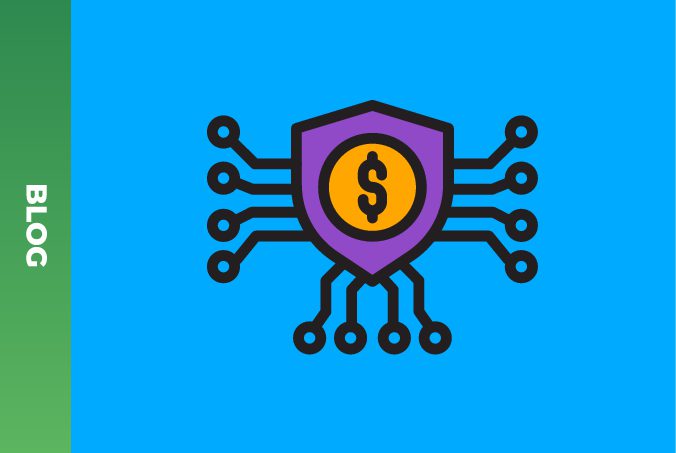Enhancing cybersecurity in Fintech: data science approaches

In the ever-expanding realm of financial technology, digital transformation has revolutionized the way we conduct financial transactions, manage investments, and access banking services. However, with this surge in technological innovation comes an inherent need for solid cybersecurity measures to safeguard vast amounts of sensitive financial data. Fintech platforms, ranging from mobile banking apps to blockchain-based payment systems, have become prime targets for cybercriminals seeking to exploit vulnerabilities for financial gain.
Some interesting figures: According to Statista, as of 2023, the estimated cost of cybercrime worldwide is 8,15 trillion U.S. dollars. By 2028, the indicator is estimated to reach 13.82 trillion U.S. dollars. Pursuant to the Global Scams Report by Callsign, 74% of financial institutions lost productivity and 76% of them incurred increased back-office expenses due to scams. The economic importance of cybersecurity is understandable from a report, which informs that almost every year $100 billion USD and 508,000 jobs are lost within the US wholly because of cyber-attacks (McAfee, 2020).

Statistics show that the stakes are too high. The fates of people, reputations, and even the existence of companies are on the line. By considering the risks, data protection strategies, and innovative security practices, we unravel the complexities of the fintech cybersecurity landscape and underscore the significance of data science approaches in not only mitigating threats but also shaping the future resilience of the fintech industry. This article explores the critical role of data science in enhancing cybersecurity within the fintech sector, addressing risks, data protection, and security practices.
What are fintech cybersecurity risks?

The growth of fintech has brought forth a multitude of benefits, but it is not without its risks. Fintech cybersecurity risks are diverse and mutating, encompassing threats such as data breaches, identity theft, and financial fraud. These risks pose a significant challenge to both fintech companies and their users, necessitating proactive measures to safeguard sensitive information.
Risks related to fintech data protection
Forewarned is forearmed, you know. Our duty is to keep you informed. So, we made a risk list so that you can at least get prepared for them and at most manage them.
- Distributed Denial of Service (DDoS) Attacks: deliberate attempts to overwhelm a fintech platform’s servers or networks, disrupting services and making them temporarily or permanently unavailable.
- Malware and ransomware: intruders often use malicious software designed to infiltrate systems, disrupt operations, or encrypt data for ransom, posing a significant threat to fintech platforms.
- Data breaches: Unauthorized access to sensitive financial information, including customer details, transaction histories, and account credentials.
- Regulatory non-compliance: It is not that easy to constantly adhere to the industry-specific laws, including Anti-Money Laundering (AML) and Know Your Customer (KYC) regulations, data protection and privacy regulations, which can vary across jurisdictions.
- Legacy systems: there are often no longer receive regular updates and security patches, leaving them susceptible to known weak points that have emerged since their last update.
- Identity theft: Theft or unauthorized use of personal information to impersonate an individual for fraudulent activities.
How may fraudulent activity be expressed in fintech?
One of the primary concerns in fintech cybersecurity is the prevalence of fraudulent activity. Cybercriminals employ sophisticated techniques to exploit gaps in financial systems, leading to unauthorized transactions and compromised user accounts. And we want you to be aware of them, as well.

- Phishing attacks: Cybercriminals send deceptive emails, messages, or websites mimicking legitimate financial institutions to trick users into providing sensitive information such as login credentials, credit card details, or personal identification.
- Social engineering attacks: fraudsters use psychological manipulation to deceive individuals into divulging confidential information, often through methods such as pretexting, baiting, or quid pro quo schemes.
- Fintech platform exploitation: Cybercriminals exploit vulnerabilities in the infrastructure of fintech platforms to gain unauthorized access, manipulate financial data, or disrupt services.
- Mobile wallet fraud: Fraudsters exploit vulnerabilities in mobile payment apps or digital wallets, gaining access to stored payment information or conducting unauthorized transactions.
How can fintech data science help to enhance cybersecurity?
Data science can be a reliable defender in addressing various cybersecurity challenges by fortifying cybersecurity measures within the fintech domain. Here’s how data science can be applied to resolve the said probable concerns:

Cybersecurity risk assessment
Data science enables fintech companies to conduct thorough cybersecurity risk assessments. By analyzing historical data, identifying patterns, and evaluating potential vulnerabilities, data scientists can develop predictive models that anticipate and mitigate emerging threats. This proactive approach empowers organizations to stay one step ahead of cybercriminals. It covers, inter alia, possible issues related to legacy systems. Business intelligence and data analytics always give insights. Always.
Fintech compliance with automated monitoring and reporting
Compliance with regulatory standards is a non-negotiable aspect of fintech operations. Data science assists in automating compliance processes, ensuring that fintech companies adhere to industry regulations and legal requirements. By continuously analyzing data handling practices, privacy controls, and security measures, fintech companies can ensure ongoing compliance. Automated reporting systems can provide real-time insights into compliance status, reducing the risk of regulatory non-compliance.
Behavioral analytics
Understanding user behavior is essential in identifying abnormal patterns that may indicate a security threat. Data science enables the implementation of behavioral analytics, where algorithms analyze user interactions and flag deviations from established norms. This holistic approach allows fintech companies to detect and respond to potential security breaches before they escalate.
Financial fraud prevention
Reinforcement to behavioral analytics should be AI and machine learning algorithms, which are of the essence in financial fraud prevention. Machine learning algorithms excel in recognizing complex patterns and anomalies. In fintech cybersecurity, machine learning models can be trained to detect irregularities in transaction data, user logins, and other activities. The continuous learning capabilities of these algorithms make them adept at adapting to evolving financial fraud threats.
What fintech security practices can you implement?

More machine learning in cybersecurity
In continuation of how machine learning can be applied, now we will speak of its subset, Natural Language Processing (NLP). By implementing email filtering systems, phishing, and social engineering emails can be identified and blocked. NLP-powered algorithms can analyze email content, recognize patterns associated with phishing, and social engineering attacks, and filter out malicious emails before they reach users. We must say you won’t regret if you decide to get AI transformation for fintech cybersecurity purpose.
Fraud detection in fintech
Data science, particularly through the application of advanced analytics and communication, transaction, or pattern analysis, enables fintech companies to enhance their fraud detection capabilities. Real-time monitoring of transactions, coupled with predictive modeling, allows for the swift identification of suspicious activities, preventing financial losses and protecting user accounts.
Data anomaly detection
What is anomaly detection?
Anomaly detection means identifying patterns or data points that deviate significantly from the norm. In the context of fintech cybersecurity, anomaly detection pinpoints irregularities that may indicate potential security breaches.
Data science algorithms excel in sorting through vast datasets to identify anomalies, enhancing the overall security posture of fintech platforms. Anomaly detection, powered by data science, can be helpful in resolving malware, ransomware, and identity theft problems.
Threat intelligence platforms
Fintech companies can benefit from integrating threat intelligence platforms. These platforms aggregate and analyze data from various sources to provide real-time insights into emerging cybersecurity threats. By leveraging threat intelligence, fintech organizations can proactively build their defenses against any threats, in particular evolving DDoS attacks, facilitating quicker and more effective incident response. Security teams can use this intelligence for security automation and continuous monitoring purposes.
Conclusion: fintech data science in cybersecurity is a must-have item
Thus, the integration of data science into fintech cybersecurity practices is mandatory for safeguarding the integrity of financial systems. From risk assessment and compliance to fraud prevention and anomaly detection, data science empowers fintech companies to stay ahead of cyber threats. In the era of data-driven decision-making, the integration of data science into fintech cybersecurity is not just a must-have item; it is the cornerstone of a secure and thriving future for the financial industry. Contact us if you need more explanations or data science solutions. See you soon!






